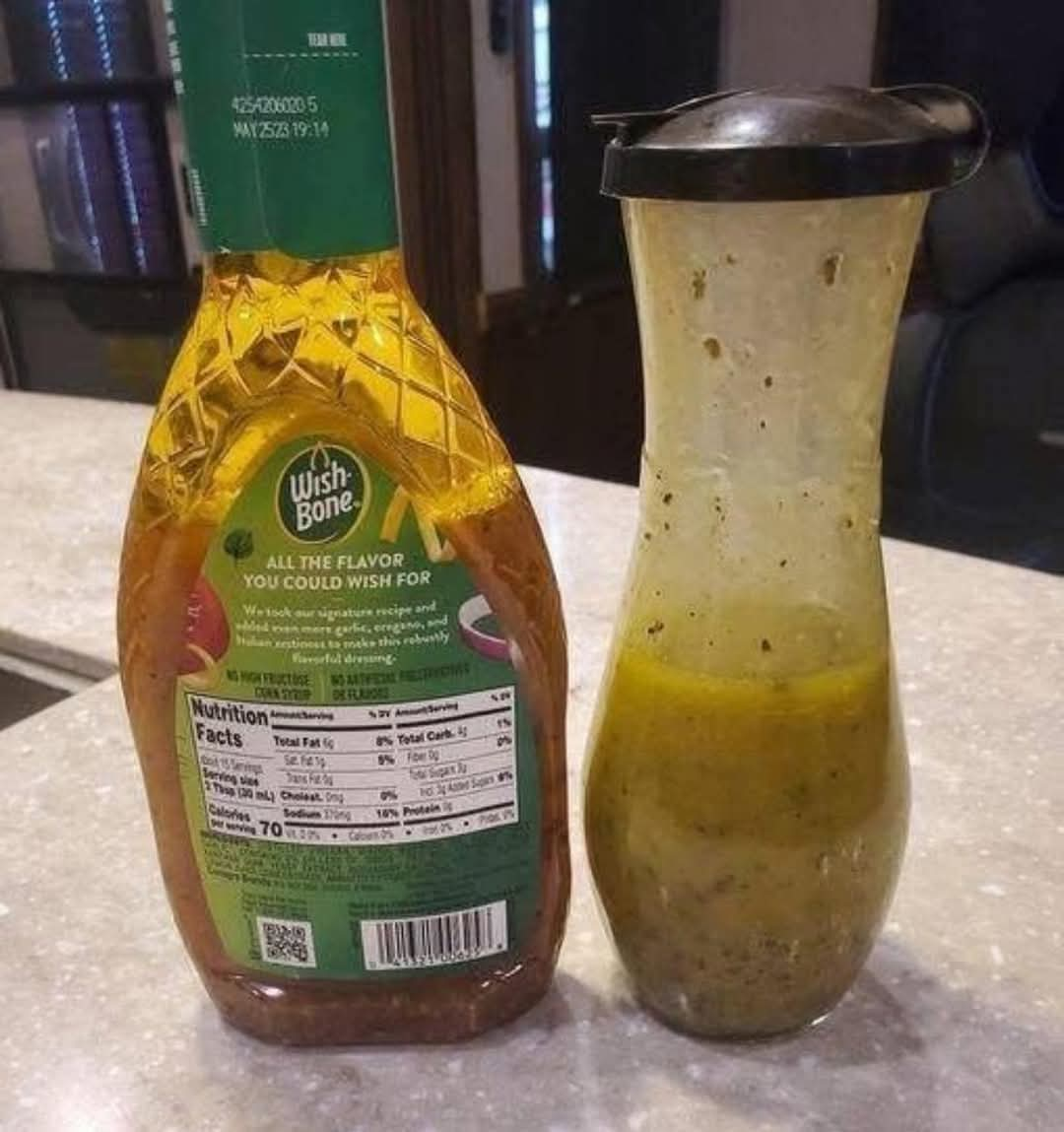Homemade vs. Store-Bought Salad Dressing – A Side-by-Side Look
Introduction
The photo above shows two salad dressings side by side: a store-bought Wish-Bone Italian Dressing on the left and a homemade Italian dressing on the right. While both may look similar at a glance, there are key differences in their ingredients, flavor profiles, and overall nutritional value. If you’re aiming to reduce your intake of additives and processed foods, making your own dressing is a simple and delicious way to start.
Store-Bought Dressing: What’s in the Bottle?
Commercial salad dressings often contain:
- Preservatives and Stabilizers: To prolong shelf life and keep ingredients from separating.
- Added Sugars: Such as sugar or high-fructose corn syrup to balance acidity, adding extra calories and potential health concerns.
- Highly Processed Oils: Soybean or canola oils are common, which may be less beneficial than high-quality oils like extra virgin olive oil.
- Artificial Colors or Flavor Enhancers: Colorants (like annatto extract) and other additives are used to enhance appearance and taste.
Homemade Dressing: Fresh, Simple, and Wholesome
In contrast, a homemade Italian dressing uses real, whole-food ingredients you likely already have in your pantry, such as:
- Extra Virgin Olive Oil: Rich in healthy monounsaturated fats and flavor.
- Vinegar or Lemon Juice: Providing a natural tang without unnecessary additives.
- Herbs and Spices: Dried or fresh oregano, basil, garlic powder, and onion powder add robust flavor naturally.
- Salt and Pepper: Simple seasonings you can adjust to your taste.
Sample Homemade Italian Dressing Recipe
- 3/4 cup olive oil
- 1/4 cup red or white wine vinegar
- 1 tsp garlic powder
- 1 tsp dried oregano
- 1 tsp dried basil
- 1/2 tsp onion powder
- 1/2 tsp crushed red pepper
- 3/4 tsp salt
- 1/2 tsp pepper
- 1 tsp lemon juice
Simply whisk all ingredients together or shake them in a jar, and you have a fresh, customizable dressing ready to use.
Nutritional Information (Approximate, Per 2-Tablespoon Serving)
- Calories: ~150 kcal
- Protein: 0g
- Carbohydrates: 0g
- Fats: ~16g
- Saturated Fat: ~2g
- Sodium: ~150mg
Note: Nutritional values will vary slightly based on the exact brands and measurements used.
Flavor and Nutrition Benefits
- Taste: Homemade dressing offers a vibrant, fresh flavor that you can tailor to your preferences.
- Nutritional Control: You decide the amount of oil, salt, or any added sugar, ensuring a cleaner nutritional profile.
- No Unwanted Additives: By skipping preservatives and artificial ingredients, you’re reducing exposure to potentially harmful chemicals.
Conclusion
When you place a store-bought bottle next to a homemade jar, the difference in ingredient quality, flavor, and nutritional value becomes clear. While commercial dressings offer convenience, creating your own dressing ensures you’re consuming fewer processed ingredients while enjoying a fresher, more natural taste.
Recommendation
For a healthier diet, experiment with homemade versions of your favorite dressings. Pair them with fresh salads, grilled vegetables, or use as marinades to enhance the nutritional value of your meals.
Embracing Healthful Indulgence
Savor the satisfaction of creating your own delicious, better-for-you dressing. Your salads—and your body—will thank you for choosing fresh, wholesome ingredients over heavily processed alternatives. Would you like more recipes or tips for reducing processed foods in your diet?
